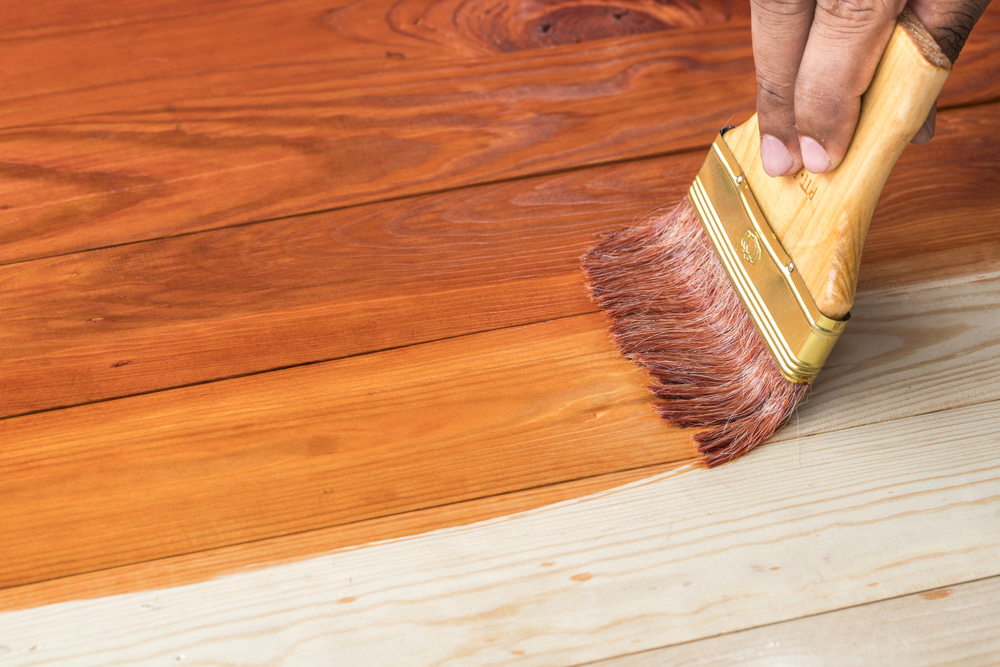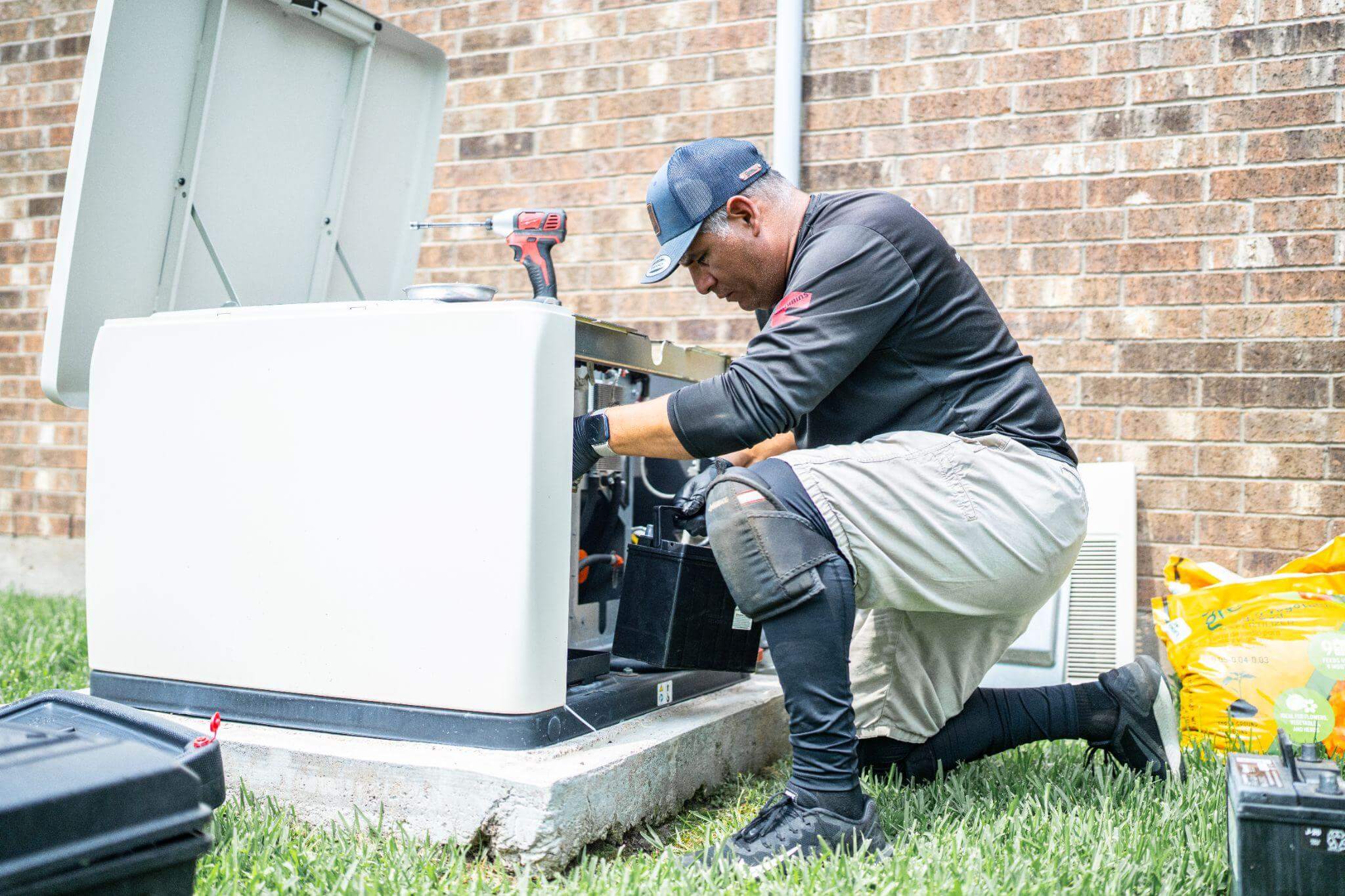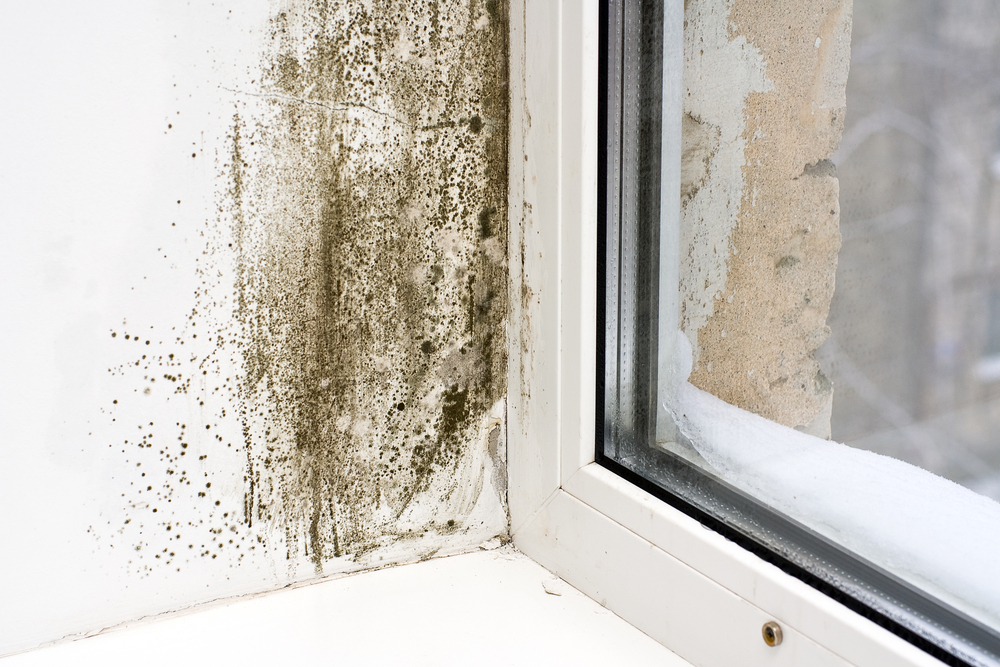Are you doing a flooring project?
Modernize can pair you with three to four pros in your area, so you can compare options and save time and money.

You’d be hard-pressed to find someone who doesn’t appreciate the charm and warmth that a wooden floor adds to any home. Still, they require some upkeep if they’re going to last for years and years—which brings us to question that so many homeowners are asking. What is the least toxic, healthiest way to finish and seal a wood floor?
Conventional Floor Finishers, Sealers, and Stains
These can be an unhealthy source of indoor air pollution. They may consist of volatile organic compounds, like formaldehyde, toluene, and various solvents. These VOCs are considered “greenhouse gases” and contribute to climate change. They can also cause a range of negative health issues, including headaches and flu-like symptoms, which trigger asthma and other respiratory illnesses. VOCs are also carcinogenic, and some people may be susceptible to their impact over the long-term.
Polyurethane finishes – These are very common. They can be either water-based or oil-based, but oil-based urethanes are most likely to contain VOCs.
Water-based urethanes – The benefits of these are that they have a low odor, they dry clear, and they dry quickly—you can even apply a second or even third coat on the same day, if necessary. They somewhat enhance the appearance of the wood they’re sealing, but they don’t add much to its color. If you want to preserve the original color of the water, water-based polyurethane is better than oil-based.
The downside of water-based urethanes is that they’re more expensive than oil-based polys. Also, they may not wear as well as oil-based products, so they may need to be refinished more frequently than floors coated with an oil-based product (however, I refinished and sealed my floors with a water-based product about 10 years ago and I haven’t needed to redo them since—even with lots of foot traffic and the wear and tear that comes from having a dog and two cats running around).
Oil-based polyurethanes – The benefits of these are that they dry harder, enhance the natural color of the wood, and require fewer applications—which makes them cheaper to use initially. But they release a strong odor, due to the VOCs they contain, and this makes it hard to stay in the home when these sealants are being applied. You may be out of your home for several days or a week while the air clears. Even afterward, the residual odor from the “offgasing” of the sealant may continue to cause headaches or nausea.
Natural Oils
As an alternative to polyurethane finishes, natural oils like tung oil and linseed oil offer a healthier finish. Unlike urethanes, which dry on top of the floor, oils penetrate into the wood and harden. This process creates a low-sheen matte finish that brings out the grain and texture of a hardwood floor.
Oils can be clear or stained, depending on the desired look of the finished product. Floors finished with natural oils show fewer scratches than those finished with urethanes because the oil has penetrated into the wood. Scratches on a urethane surface, though, are more obvious. On the other hand, a floor finished with a urethane is more resistant to dents and dings because it creates a surface coating on the wood that helps protect it.
Natural oils may also emit an odor, but they won’t be the same toxic VOCs that urethanes emit.
Find the Right Contractor for Your Flooring Project
Whether you’re ready to begin your project now or need some expert advice, our network of contractors are here to help. With a few simple questions, we’ll find the best local professionals for you
Choosing Safer Sealants
Make sure to opt for the most odor-free choice that also meets your criteria for durability, ease of application, wear and tear, cost, and health. It’s best to apply during the time of year when you can keep windows and doors open to maximize air circulation and exchange. Run fans to keep air moving and to speed up the drying process—this is particularly important in bedrooms and nurseries. If possible, finish wood floors long before you need to move back into a room you’re going to sleep in.
Companies like Amicus Green offer some of the safest and healthiest sealants. You can peruse their online showroom or speak with someone by phone about the best choice for your home. Here are some of the brands they carry:
Safecoat Polyureseal BP wood and floor sealant – Boasting a very low VOC content, this one meets or exceeds all federal and state air quality regulations, including those set in California. It contains no formaldehyde and claims it is safe enough to be used even by those who consider themselves “chemically sensitive.”
Ecos Wood Shield Stain – Water-based and containing zero VOCs, glycols, or VOC pigments, this choice is fast-drying, and cleans up easily with soap and water. It should be used in conjunction with a no-VOC finish.
OSMO Polyx Oil – This no-VOC, benzene-free option is particularly good in a room like a kitchen because it’s water-repellent and can resist spills—a particularly smart choice for families.
Vermont Natural Coatings PolyWhey Floor Finish – What makes this low-VOC finish different is that it uses whey protein, which dries it quickly to a hard finish. The whey protein is actually a natural by-product of the dairy industry, so using it takes it out of the waste stream, another environmental benefit.
If you want to paint faux wood, try using a product like “Natural Crackle” from the Milk Paint Co. The paint dries with a rustic, antiqued look. It is non-flammable and odorless after drying to a satin sheen. Keep in mind that it needs to be sealed with a topcoat. The Milk Paint Company recommends an oil-based topcoat, like pure tung oil or dark raw tung oil.
Final Tips
When it comes to cleaning a wood floor, the key is to wipe up spills as soon as they occur so they don’t set into the wood. Keep mats at the door and near the kitchen sink, dishwasher, and stove to catch drips and spills. Avoid ammonia-based or vinegar-based cleansers, since they will dull the finish and performance of your floor. Use a microfiber broom to collect dust and dirt, then mop with a slightly damp mop—not soap and lots of water. If you need a deeper cleaning, look for a commercial product that is formaldehyde, solent, and VOC-free.
Have you ever used non-toxic wood sealers or stains? Which ones? Share with us in the comments below!
Find the Right Contractor for Your Flooring Project
Whether you’re ready to begin your project now or need some expert advice, our network of contractors are here to help. With a few simple questions, we’ll find the best local professionals for you
Reviews from Real Homeowners
Welcome to Homeowner Resources! We are the Modernize blog. Modernize pairs more than 3 million homeowners a year with pre-vetted contractors in their area. This blog started because we believe homeowners should know everything about their homes, from how their HVAC works to which front door colors they might love. On Homeowner Resources, you can find information on every part of your home, right down to how you can negotiate with contractors to get the best price. Here's more about the blog.
Need a contractor? Learn more about how Modernize finds the right pro for you.


